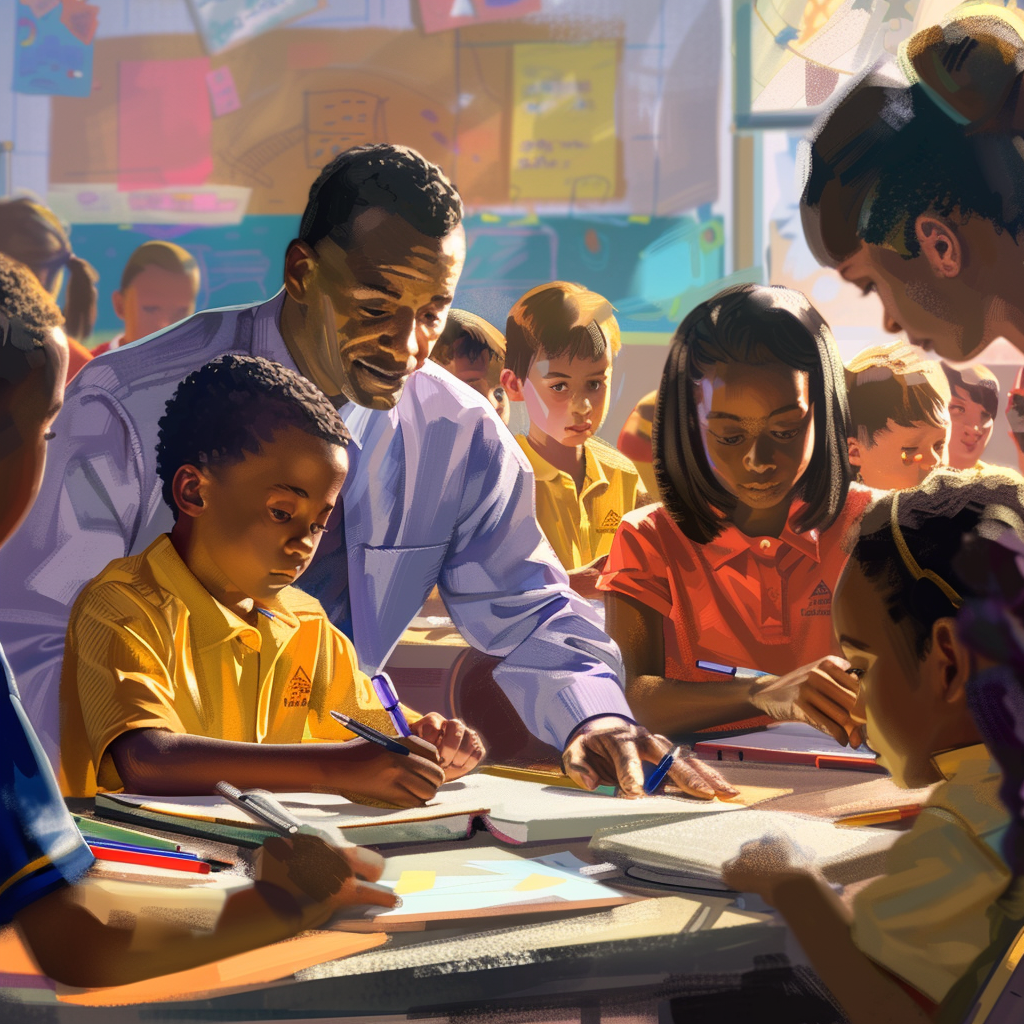Mastery Over Time: How Competency-Based Learning is Revolutionizing Education
Discover how competency-based learning empowers mastery, personalizes pace, and equips students with real-world skills—plus classroom strategies to start today.

Imagine a classroom where every student moves at their own pace, mastering skills and concepts before advancing to the next level. Picture an environment where the focus is on what students learn, rather than how long they spend learning it. This is the promise of competency-based learning (CBL), an innovative educational approach that is reshaping how we think about teaching and learning. In a world where personalized education and real-world skills are becoming increasingly important, CBL offers a way to meet these demands head-on. By prioritizing mastery, flexibility, and continuous feedback, CBL empowers students to take control of their learning journey and prepares them for future success. Let’s dive into what competency-based learning is, why it matters, and how you can implement it in your classroom to transform your students’ educational experiences.
The Importance of Competency-Based Learning
CBL places students at the center of their educational journey, catering to their unique learning styles and paces. Unlike traditional models that move students through a standardized curriculum regardless of their mastery, CBL allows for personalized learning paths. This flexibility ensures that students fully understand and retain knowledge before moving on to more complex concepts. By focusing on individual needs, CBL helps close achievement gaps, fosters a growth mindset, and promotes self-directed learning, ultimately leading to a more engaging and effective educational experience.
CBL emphasizes the mastery of specific skills and competencies rather than the completion of time-based courses. This approach ensures that students develop a deep understanding of the material, which is crucial for long-term retention and application. Mastery-based education enables students to build a solid foundation of knowledge and skills that are essential for their future academic and professional success. By requiring students to demonstrate proficiency before progressing, CBL promotes higher standards of learning and helps prepare students for real-world challenges where competence is key.
Enjoy science fiction? Check out my space books HERE on Amazon!
In today’s rapidly evolving job market, the ability to adapt and continuously learn new skills is more important than ever. CBL aligns education with the demands of the workforce by focusing on competencies that are directly relevant to various career paths. This model encourages the development of critical thinking, problem-solving, and other soft skills that employers value. Additionally, CBL often incorporates real-world projects and experiential learning opportunities, bridging the gap between academic knowledge and practical application. By preparing students for lifelong learning and adaptability, CBL equips them with the tools needed to thrive in an ever-changing world.
Core Components of Competency-Based Learning
At the heart of CBL is the clear definition of competencies and learning outcomes. These competencies are specific skills and knowledge that students must master. By clearly articulating what students need to know and be able to do, educators can create focused and measurable learning objectives. This transparency helps students understand the goals they are working towards and provides a roadmap for their learning journey. It also enables teachers to design assessments that accurately measure student progress and mastery, ensuring that every student reaches the desired level of proficiency before moving on.
One of the most significant advantages of CBL is its flexibility in learning pathways. Students are not bound by a rigid curriculum schedule; instead, they can progress at their own pace, taking the time they need to master each competency. This flexibility allows for a more personalized learning experience, accommodating different learning styles and paces. Teachers can use a variety of instructional strategies and resources to meet individual student needs, creating a more inclusive and supportive learning environment. This adaptability ensures that all students have the opportunity to succeed, regardless of their starting point.
In competency-based learning, assessment is an ongoing process that provides continuous feedback to students. Formative assessments, such as quizzes, projects, and observations, are used regularly to gauge student understanding and guide instruction. This frequent feedback helps students identify areas where they need to improve and allows teachers to adjust their teaching strategies to better support student learning. Summative assessments are also used to evaluate overall competency mastery. By focusing on continuous assessment and feedback, CBL ensures that students receive the support they need to achieve mastery and fosters a growth mindset by emphasizing progress and improvement over time.
Implementing Competency-Based Learning Projects
To implement CBL projects effectively, start by identifying the competencies students need to master. Collaborate with colleagues to develop clear, measurable learning outcomes for each project. Design projects that integrate multiple disciplines and real-world applications, ensuring they are relevant and engaging. Use backward design to create assessments that align with these outcomes, providing students with a clear understanding of what is expected. Break the project into manageable tasks with milestones, allowing students to progress at their own pace. Providing detailed rubrics can help students understand how their work will be evaluated and what excellence looks like.
Creating a supportive environment is crucial for CBL. Shift the role of the teacher from a traditional instructor to a facilitator or mentor, guiding students through their learning journey. Encourage collaboration by having students work in teams, which fosters peer learning and support. Utilize flexible seating arrangements and resource areas to create a dynamic classroom space. Incorporate technology, such as learning management systems (LMS), to track progress and provide resources. Regularly check in with students to offer feedback and support, helping them stay on track and address any challenges they encounter. This approach builds a community of learners who support one another.
Project Ideas
1. STEM Projects: Create virtual labs where students can conduct experiments and simulations, allowing them to demonstrate their understanding of scientific principles.
2. Community-Based Projects: Partner with local organizations to address community issues, such as developing a recycling program or conducting a neighborhood health survey.
3. Technology Integration Projects: Have students create digital portfolios showcasing their mastery of various competencies, using multimedia tools to present their work.
4. Service Learning Projects: Engage students in service-learning by working on projects that benefit the community, such as organizing a charity event or creating educational materials for younger students.
5. Entrepreneurship Projects: Students can develop a business plan or prototype for a product, applying skills from multiple disciplines.
These ideas provide practical ways to implement CBL, making learning meaningful and directly connected to real-world skills.
Assessment and Evaluation in Competency-Based Learning
In CBL, both formative and summative assessments play crucial roles. Formative assessments are ongoing checks for understanding, such as quizzes, peer reviews, and classroom discussions, that provide immediate feedback to students. These assessments help identify areas where students need further practice and guide instructional adjustments. Summative assessments, on the other hand, evaluate student mastery at the end of a learning period through comprehensive projects, presentations, or exams. This dual approach ensures continuous learning and improvement while validating competency mastery. Teachers should balance both types to support student progress and provide a comprehensive evaluation of their skills.
Student portfolios are an effective tool in CBL for showcasing student growth and competency mastery. These portfolios can include various artifacts such as written assignments, project reports, videos, and self-assessments. By maintaining a portfolio, students can reflect on their learning journey, set future goals, and demonstrate their skills and achievements comprehensively.
Check out our engaging printable posters. CLICK HERE to explore!
Incorporating peer and self-assessment in CBL encourages students to engage in reflective practices. Peer assessments provide diverse perspectives and foster collaborative learning, while self-assessments help students take ownership of their learning process. Both methods promote critical thinking, self-awareness, and a deeper understanding of their strengths and areas for improvement.
Challenges and Solutions in Competency-Based Learning
Transitioning to CBL can be challenging due to entrenched traditional mindsets. Educators, students, and parents may be accustomed to time-based progression and standardized testing. To overcome this, provide thorough professional development for teachers, and engage stakeholders through workshops and communication about the benefits and success stories of CBL.
CBL must be implemented with a focus on equity to ensure all students benefit. Addressing diverse learner needs involves providing access to necessary technology and resources, differentiating instruction, and offering additional support where needed. Schools should also strive to create an inclusive environment that values and supports all learners, regardless of their background.
Effective implementation of CBL requires comprehensive training and ongoing professional development for educators. Teachers need to understand the principles of CBL, develop skills in designing competency-based assessments, and learn how to facilitate personalized learning paths. Professional development can include workshops, collaborative planning sessions, and mentorship programs. Additionally, providing teachers with resources and support for continuous learning and reflection is crucial. By investing in teacher training, schools can ensure that educators are well-equipped to manage the shift to CBL and can provide high-quality, student-centered instruction that meets the diverse needs of their students.
Conclusion
Competency-based learning offers a transformative approach to education, focusing on mastering specific skills and competencies rather than adhering to a traditional, time-based curriculum. This method addresses individual learning needs by allowing students to progress at their own pace, ensuring they achieve a deep understanding of the material before moving forward. By emphasizing mastery, CBL better prepares students for future academic and professional challenges, equipping them with the necessary skills and knowledge to thrive in a rapidly evolving world.
Implementing CBL involves clear definition of competencies, flexible learning pathways, and continuous assessment and feedback. Teachers play a crucial role as facilitators, guiding students through personalized learning journeys and creating supportive environments that encourage collaboration and self-directed learning. Practical project ideas, such as STEM experiments, community initiatives, and technology integration projects, provide meaningful and engaging ways for students to demonstrate their competencies.
While there are challenges in shifting from traditional mindsets and ensuring equity, comprehensive teacher training and professional development can help overcome these obstacles. Highlighting success stories from schools and districts that have successfully implemented CBL can inspire and guide educators in their own CBL endeavors.
By embracing competency-based learning, educators can create more personalized, equitable, and effective educational experiences that not only meet the diverse needs of students but also prepare them for lifelong learning and success. The future of education lies in flexible, student-centered approaches that prioritize mastery and real-world application, making competency-based learning a vital strategy for the 21st century classroom.
Check out some of my latest science fiction books HERE on Amazon!
Transform your classroom into an inspiring and vibrant learning space with our beautifully designed printable posters! Perfect for engaging your students and enhancing your teaching environment, our poster bundles cover everything from historical philosophers to animals. CLICK HERE to explore our exclusive collections on Teachers Pay Teachers and give your students the motivational boost they need!
